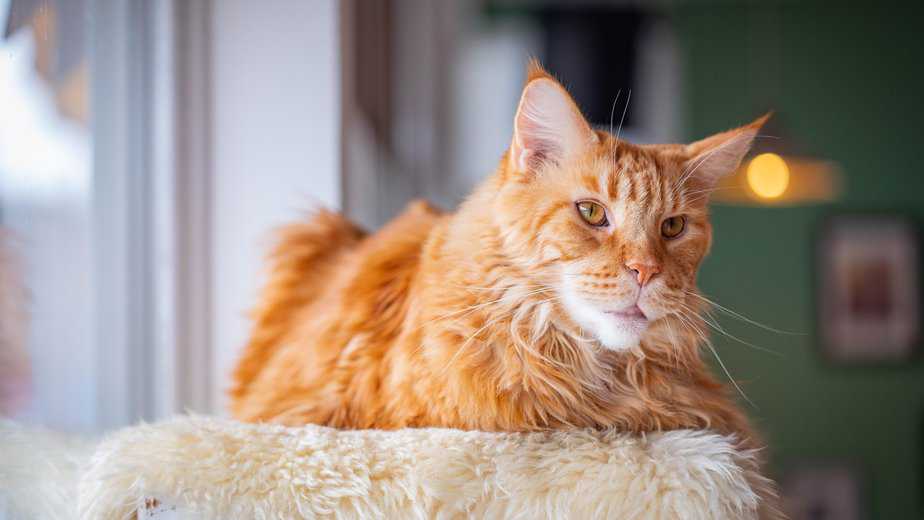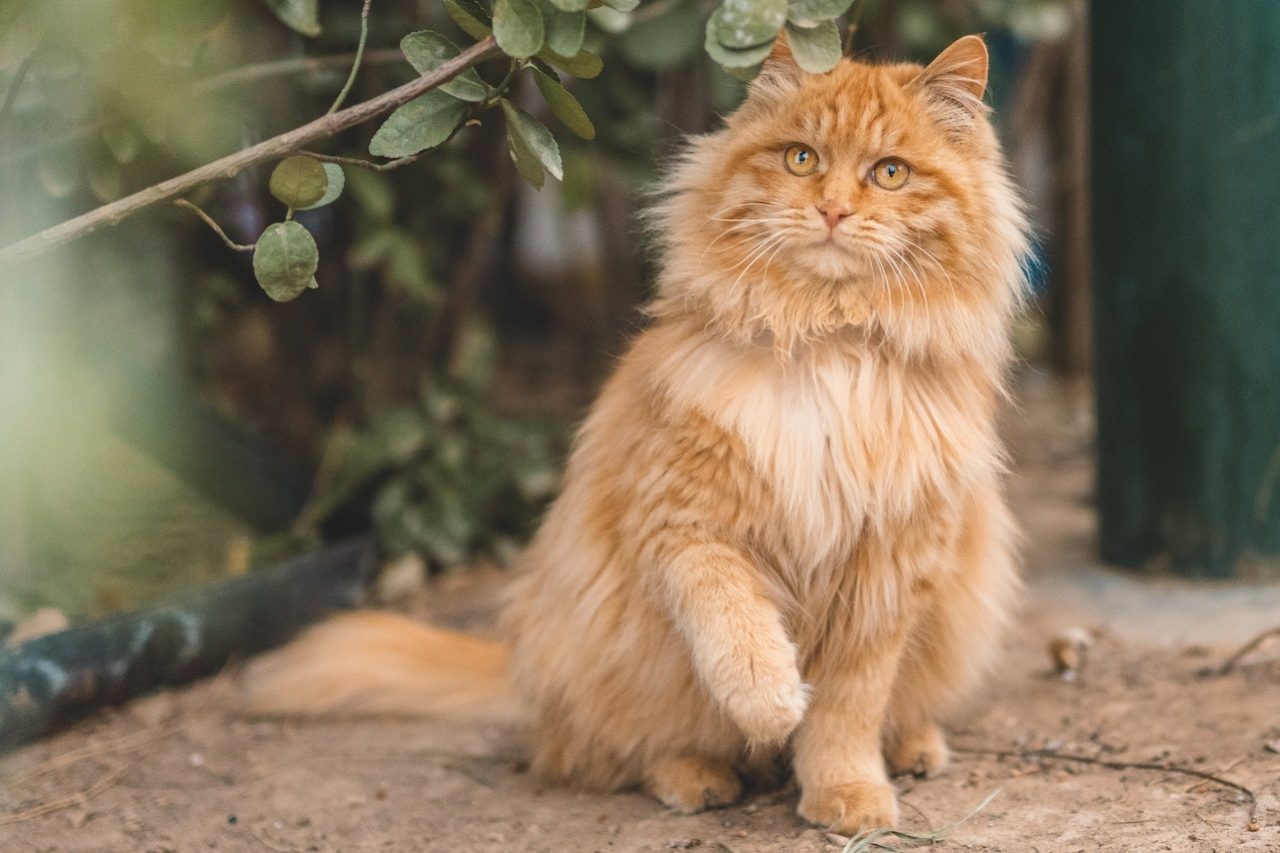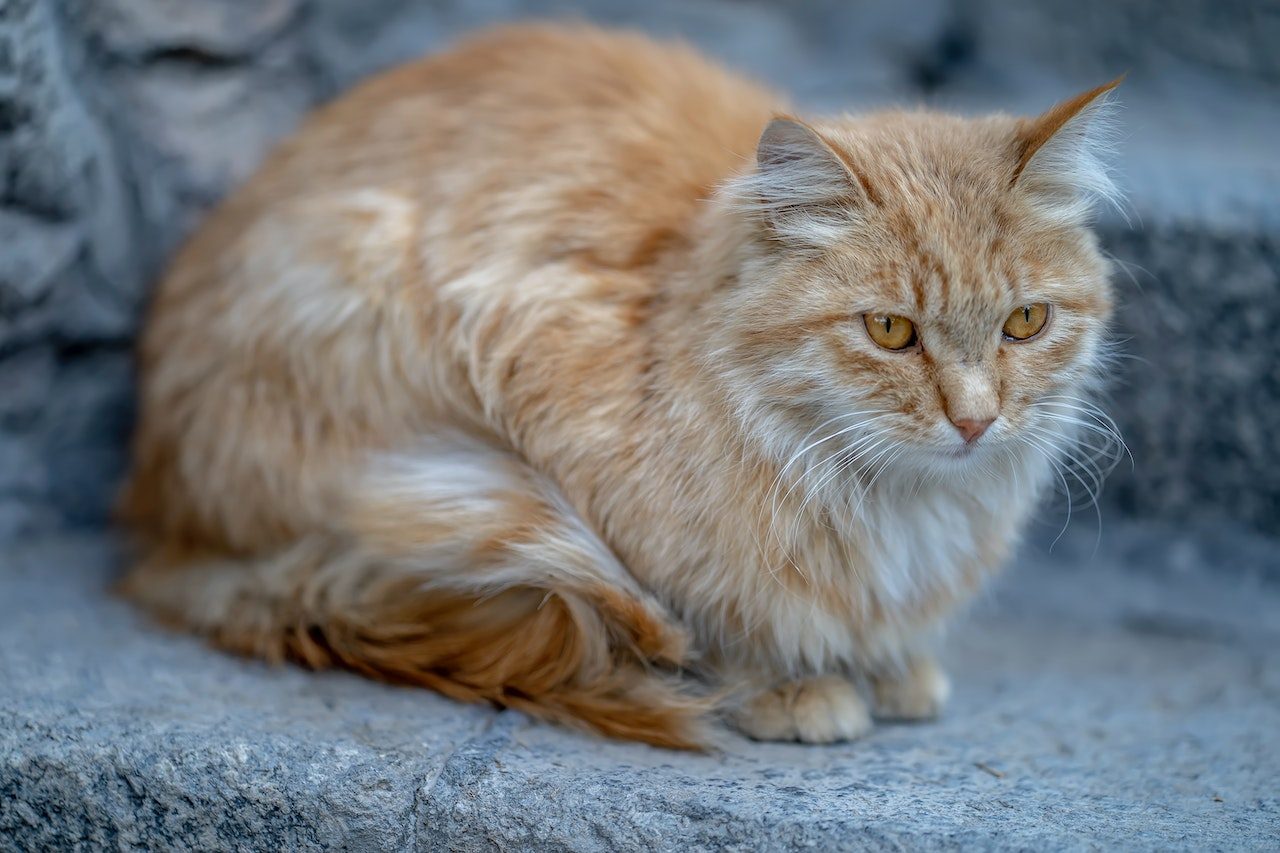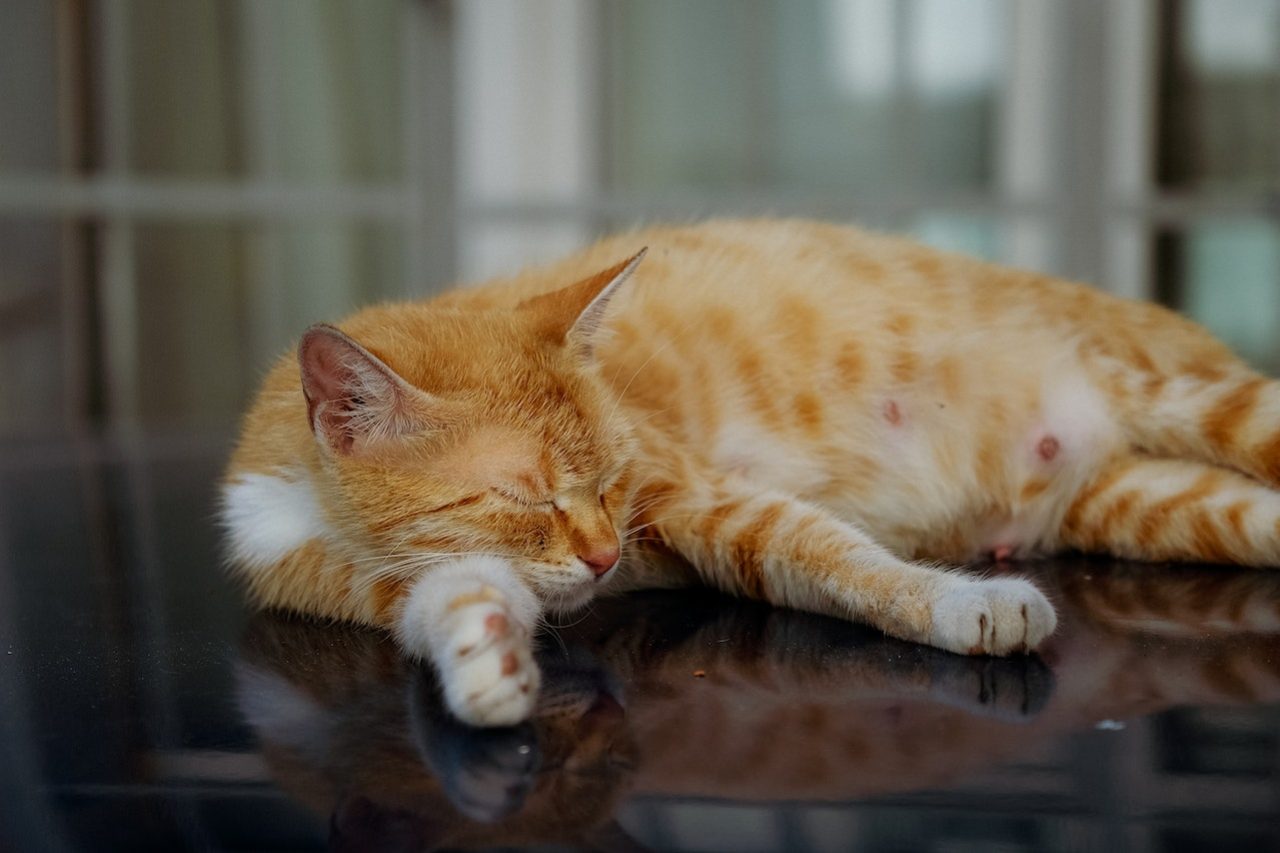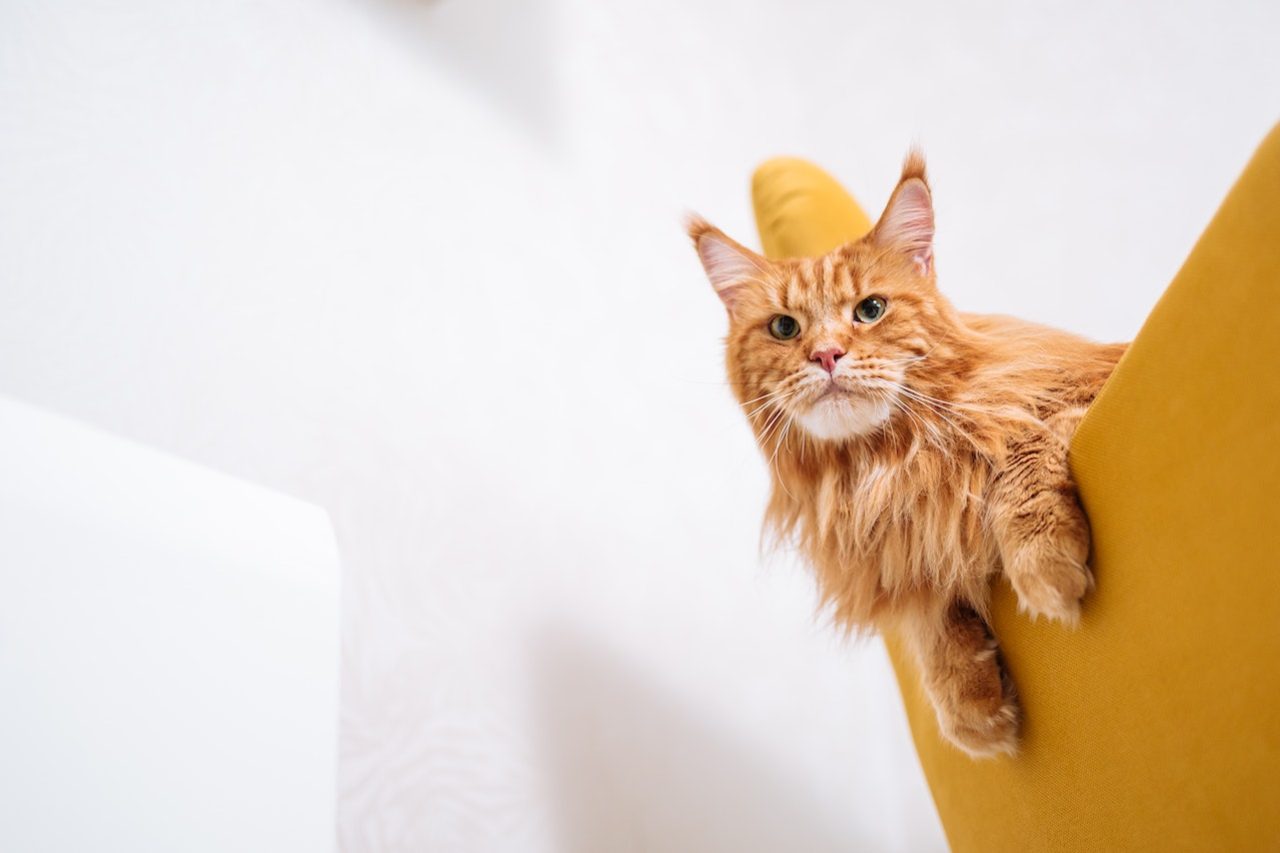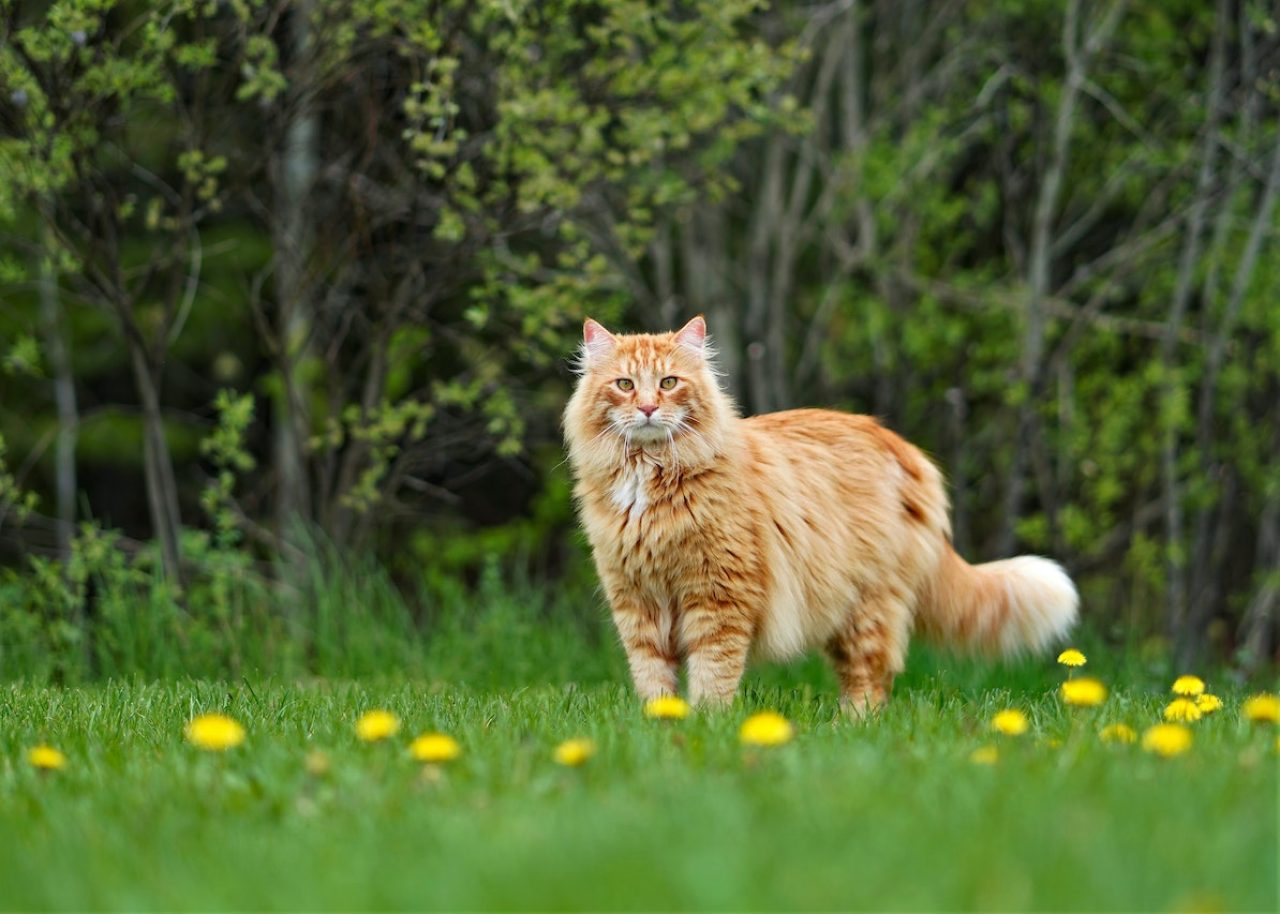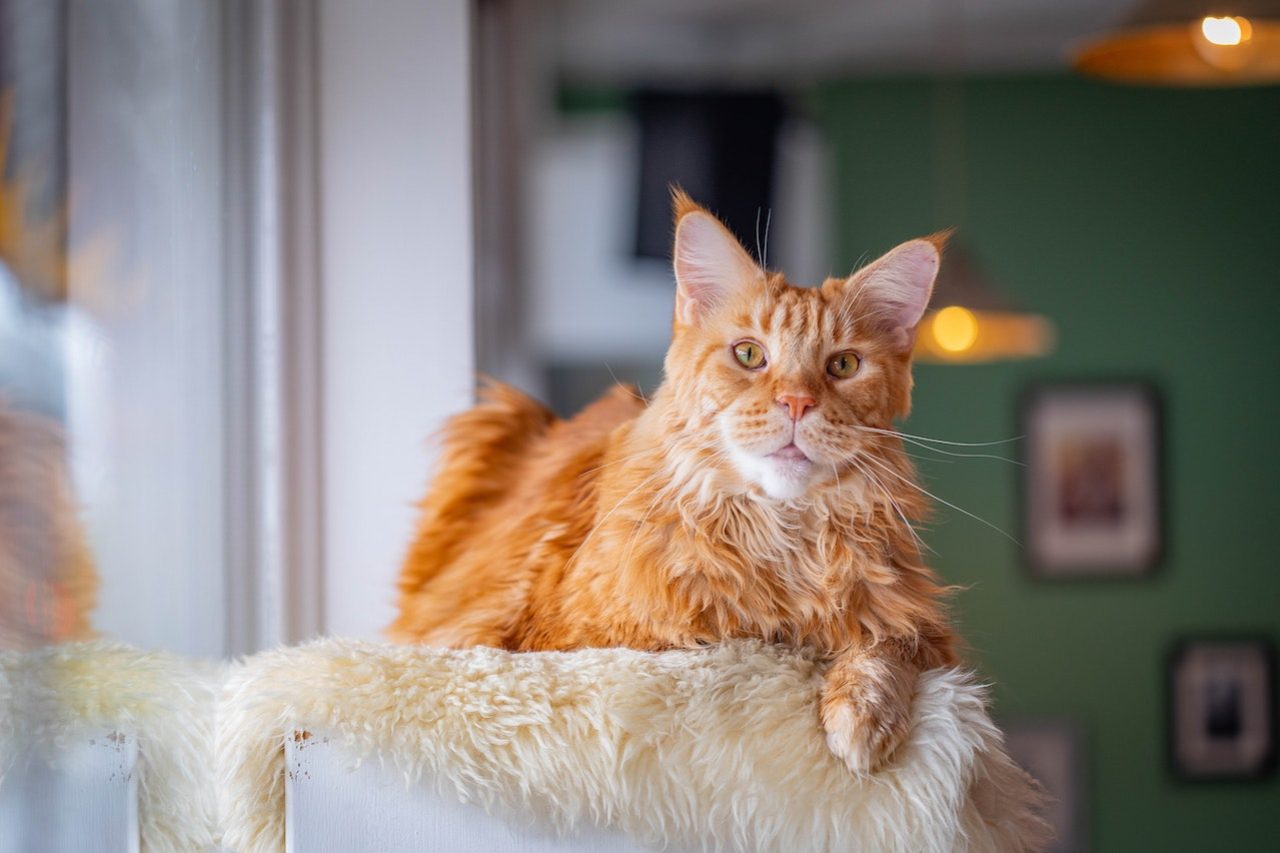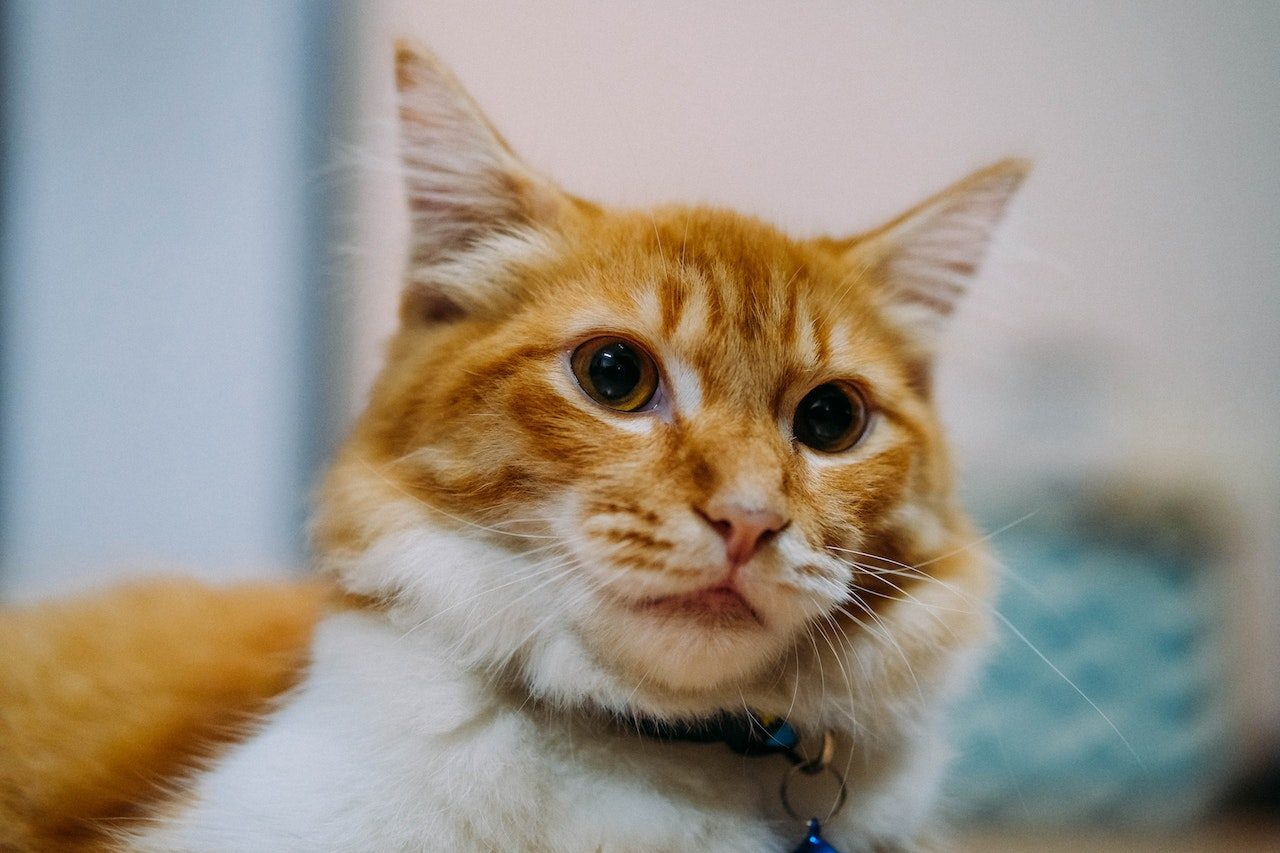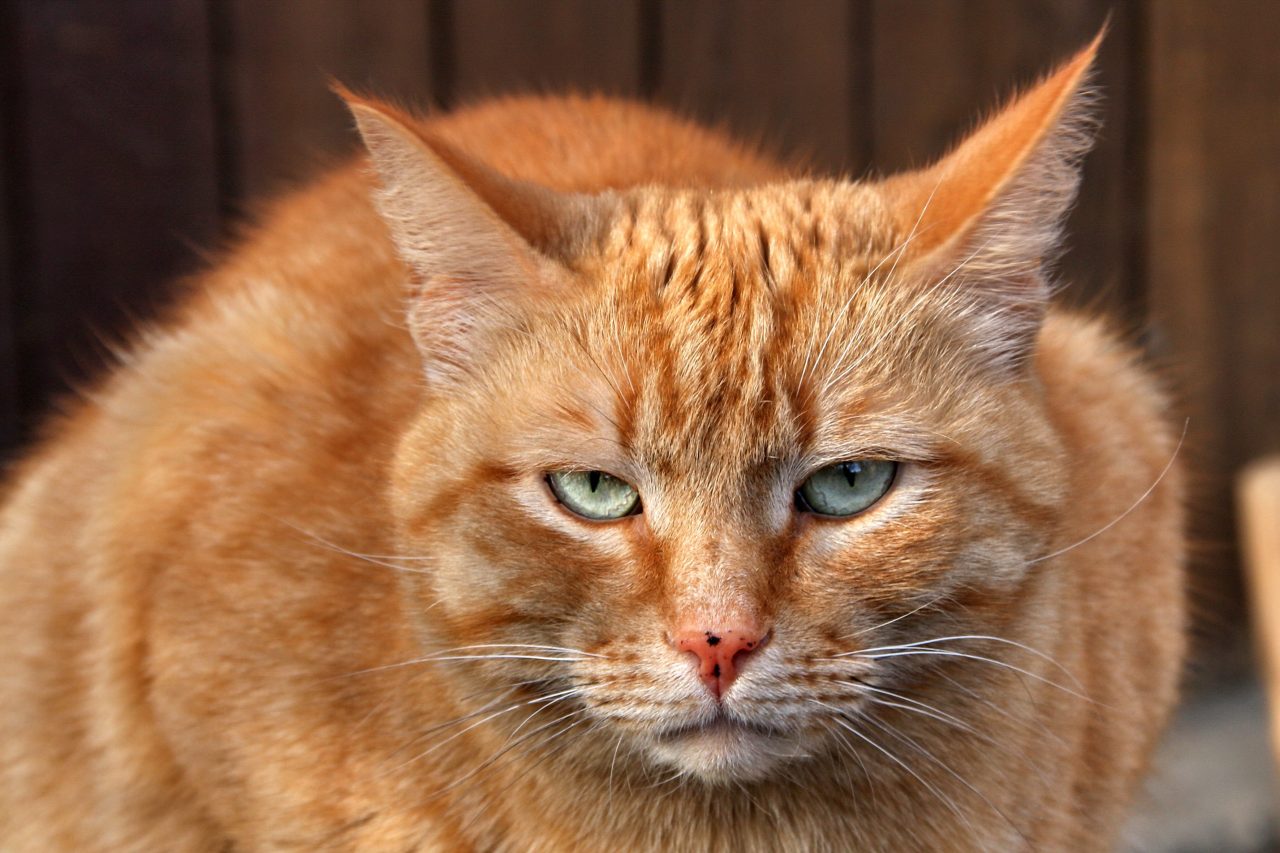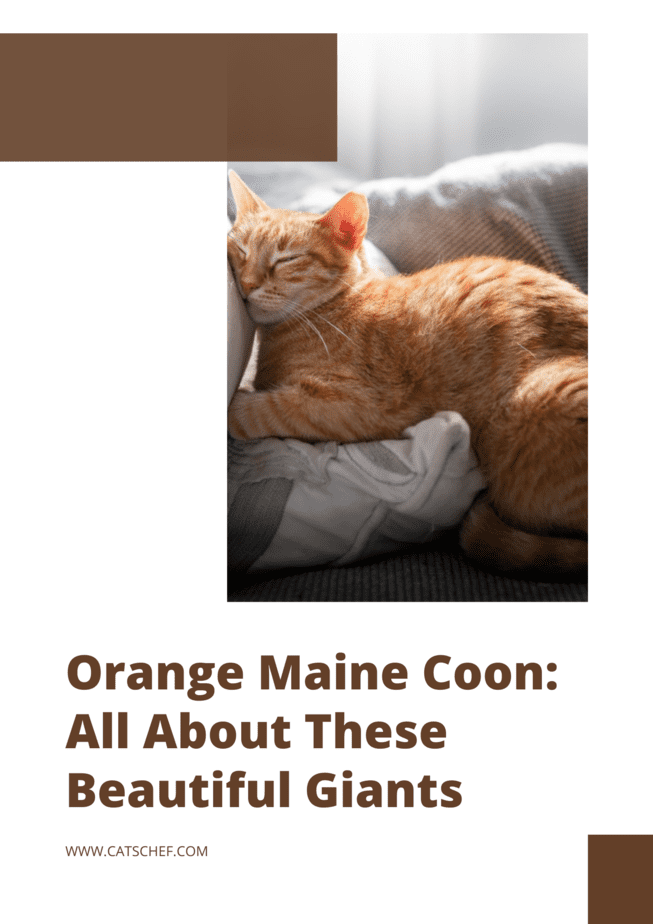📖 Table of Content:
Whenever I hear about ginger cats, the first thought in my mind is one cat. The lasagna lover, the Monday hater, and the one who secretly loves Odie. Yes, I’m talking about Garfield. So, when I heard about orange Maine Coons, it was no exception.
Later, I came to realize that Maine Coons are WAY different from Garfield’s breed (which will remain a mystery forever because nobody has a clear answer yet). But honestly, I liked what I saw. If you’re in the mood to discover the world of these gentle giants with me, I’ll gladly show you around!
Maybe some things won’t be super interesting, but please be patient, it’s the reason for their uniqueness. Firstly, we’re going to clear up one thing. People often describe these beautiful creatures as “red.” That’s because Cat Fanciers Association (CFA) doesn’t recognize orange as the official color of Maine Coons’.
They are divided into four main classes, each of them having a specific name that describes their fur color. These are Solid Red Maine Coon, Red Tabby Maine Coon, White Maine Coon, and Cameo Smoke (Red Smoke) Maine Coon.
You’ll see these babies rarely, but if two of them mate, you’ll have a bunch of orange Maine Coons. Isn’t that amazing? If you’re interested to find out more about these unicorns in the cat world, welcome! Join me on this journey of discovering their world.
What does an orange Maine Coon look like?
I can’t lie, completely grey cats and orange ones have a special place in my heart. I feel like their personality is a bit warmer and more mysterious, compared to those “regular“ cats. Don’t get me wrong; kitties, in general, are picking my interest easily, and it seems like I just can’t stop researching about them.
So, what does this beauty look like?
Orange Maine Coons have medium to long fur that needs almost constant grooming. They can weigh 15-25 lbs (6-11 kg) and be up to 16 inches (40cm) tall. What’s really interesting about them is that they can be one meter long (measuring from the tip of their nose to the end of their tail).
Many of these Orange Maine Coons have freckles on their lips and nose, sometimes even around their beautiful golden or greenish eyes. These adorable cats have very fluffy and thick fur and they are the ultimate cuddle-buddy. Just take them into your hands, I know you won’t regret it.
If anyone asks you what is the largest domestic cat breed, I hope you remember the Maine Coon, because they, indeed, are just that! But, don’t let their size scare you, they are extremely friendly creatures and absolutely love spending time with people. I mean, after all, their nickname is “gentle giants“.
Where do they come from?
You’ve probably heard that once upon a time, a domestic cat mixed her genes with a raccoon and that’s how this breed was created. People have such an incredible imagination, don’t they?
What’s more likely is that Maine Coons were originally brought in from Europe, and they adjusted to the conditions of the environment they found themselves in.
I’m not sure if you’ve heard about it, but there’s also the theory that Maine Coons were cats of the Queen of France, Marie Antoinette, and that they were either from Turkey or Russia. Back in 1903, The book of the Cat was published and that was the first time someone wrote about these giants in the cat’s world.
The reason why they got the name they have today is that a great number of these felines can be found in Maine, and during the late 1860s farmers had a competition. They were choosing “Maine State Champion Coon cat,” where these cats were shown off with pride.
Naturally, they were really popular when it comes to these competitions until other breeds started competing. In the early 1900s, just a small number of Maine Coons were participating and orange ones were the majority. They were considered an extinct species in the 1950s until the Central Maine Cat Club was formed.
As soon as they took over their job, the title was given back to these wonderful creatures, and ever since then, Maine Coon is one of the most popular cat breeds. And I’m not only talking about the USA, guys. All. Over. The. World.
The Independent Cat Federation recognized Maine Coon as a real deal in 1969. The Cat Fanciers’ Association chose to reject this decision three times. But, in 1975. they finally agreed with the recognition of this breed.
The International Cat Association accepted Maine Coons in 1979. The first Maine Coon Cat Club was created in 1973., and the state of Maine said this is their official cat in 1985. If you ask me, they came a long way from extinction to being the “state“ cat. Pretty interesting, right?
What are the different types of orange Maine Coon?
At the beginning of this article, I mentioned that orange Maine Coons are separated into four different groups. That’s done based on the color of their fur: Solid Red Maine Coon, Red Tabby Maine Coon, Red, and White Maine Coon, and Cameo Smoke (Red Smoke) Maine Coon.
In this part, we’ll quickly explain all of them. So, let’s start.
1. Solid Red Maine Coon
The fur of this subgroup is a deep shade of orange and they have Tabby markings that are less visible than in others. That’s the reason that they appear to have one-color long hair. Also, their lips and chin are exactly the same color as their fur and that makes them different.
2. Red Tabby Maine Coon
When we’re talking about this group, they also go by the name of Orange and White Maine coons. They have more visible Tabby characteristics and their chin and lips are completely white. Some of them also have a large white area on their chest, too!
Red Tabby and White Maine Coons are also easily recognizable because of their white paws.
3. Red and White Maine Coon
This group is one of the easiest to recognize when it comes to orange Maine Coons, because they are almost completely white. Their whole lower area of the body (paws, belly, and chest) is white, meaning that only their back and head (to some extent) are orange. Tabby markings are not as visible on them and the amount of orange and white are almost the same.
4. Cameo Smoke (Red Smoke) Maine Coon
Okay, these beauties compared to other orange Maine Coons (or Red Maine Coons), don’t have such vivid colors. They have an almost faded orange color, desaturated even. Their white undercoat makes them look completely white from a distance, but you’ll notice they’re gingerish once you get closer.
What is also pretty important in this group is that they have distinctive Tabby markings, and the M-shape which is specific for Tabbies, is clearly visible on their foreheads. Some of them have completely white paws and therefore have a special name, Cameo Smoke (Red Smoke) and White Maine Coon.
The main characteristics of orange Maine Coon
Now that you have general knowledge about what orange Maine Coon is, where they came from and you (hopefully) have a clear picture of how they look, it’s time for us to go deeper into the main characteristics of this breed.
Are they good house pets, or should they stay outside? How many times a day should they exercise? What are some major health concerns of this breed? Are they truly mostly male, or it’s just a myth?
If you need some of these answers, this is the right place for you. Keep reading and discover why “gentle giants“ are the perfect choice for you.
1. Personality
Even though they may scare you a bit when you see them for the first time, these beautiful giants from the Maine Coon family are one of the friendliest breeds there are. They’ll enjoy spending time with your family and playing with your kids.
However, they may be a bit scared at the beginning and they’ll probably need some time to adapt to the new surrounding and you as their new owner. Maine Coons, in general, are known for their dog-like behavior and, unlike most cat breeds, they can actually be trained.
Orange Maine Coons are really gentle and friendly. Some people connect their warm colors with the way they behave, which is not too far from the truth (but there is no scientific proof yet). These beautiful creatures absolutely love socializing and they’ll enjoy spending time with other pets in the house (if you have them, of course).
Some owners would define them as overly affectionate, but very loyal. They are playful and highly intelligent and they adore water. Don’t be surprised if they leave a mouse or a bird on your doorstep as a gift for you. That’s how they’re proving their loyalty and showing off their hunting skills.
Also, they are pretty curious felines, so if you catch them munching on something like your furniture, popcorn, or your flip-flops, try to move them away. Other than that, I assure you that you’ll enjoy their company and their eagerness to explore the world around them.
2. Grooming and shedding
We’ve mentioned previously that orange Maine Coons have long fur that needs constant grooming, so if you’re not in the mood to brush them often, this breed is definitely not for you. Their fur is prone to hairballs, and in order to prevent that, you’ll have to help your feline with brushing.
You’ll have to do this twice a week (minimum), and if your feline goes outside, or she’s an outdoor cat, you’ll have to do this more often. Start this when they’re younger, so they can get used to it. You can also find food that contains a decent amount of fiber which will help your feline with shedding problems.
These beloved angels shed more than most cat breeds, and therefore, they don’t belong to the group of hypoallergenic cats. Also, you’ll need to vacuum and clean your house frequently in order to collect all of your cat’s hair.
3. Playtime and training
Did I mention that they are a pretty active cat breed? Of course, I did. I’d make a mistake if I didn’t. Orange Maine Coons require a lot of exercise and playtime. Make sure you have a lot of different cat toys that will help your feline to use all of her energy.
If they’re active enough, that may prevent different health issues that may appear in the long run, such as obesity. Let them chase after birds and other smaller animals because they have to fulfill their hunting instinct.
You can get creative, sprinkle some catnip all over your living room or make them go on a treasure hunt around the house, with their final destination being a bowl full of their favorite treats. Don’t hesitate to add some scratching posts (but for big cats), cat condos, or hammocks to satisfy their curiosity and keep them entertained.
One of the specific characteristics that this breed has is that you can easily train them. What do I mean by that? Orange Maine Coons can quickly learn a couple of tricks and if you give them a reward after successfully finishing the required task, they’ll definitely repeat the same thing just to get that cookie.
Try training them to sit or lay down. Make them give you a high five or spin around, and have fun (both of you!).
4. Health issues
Their fur color doesn’t have any effect on the health problems that they may have, even though it may have an effect on their personality. Orange Maine Coons can have various health issues, from those that are not so serious to the ones that may be lethal.
In this part, we’ll quickly analyze them, starting with those that almost don’t have any serious risk or damage.
Stomatitis is basically inflammation inside your cat’s mouth. If she has this problem, her fur will look dirty since she didn’t clean it in a while. She’ll also lose her appetite.
Periodontal disease is another health problem that affects her mouth as well. In this case, she’ll have issues with her gums and her food consumption will decrease as well, due to her inability to chew.
The last minor condition that she may have is obesity. If it gets out of control, it automatically changes into something serious, so I guess it’s kind of on the border with serious diseases. You can control this one easily with proper diet and nutrition, as well as vigorous exercise and playtime.
If we’re talking about some serious diseases orange Maine Coons may have problems with, those are definitely hip dysplasia, hypertrophic cardiomyopathy, spinal muscular atrophy, and polycystic kidney disease.
Hip dysplasia is actually an orthopedic problem where hip joints fail to develop normally, and with time, the function of the hip is almost non-existent.
Hypertrophic cardiomyopathy is a cardiac disease and it causes the muscular walls of your feline’s heart to be thicker. This prevents the normal functioning of the heart.
Spinal muscular atrophy is actually a genetic disorder when it comes to Maine Coons. If your feline has this disease, she’s slowly losing her spinal cord nerves that control her limbs and it’s visible when the cat is 3-4 months old.
The last one mentioned is polycystic kidney disease which results in pockets of fluid appearing on the inside of your cat’s kidneys and they prevent the normal functioning of the organs. All of these severe illnesses should be treated as soon as possible in order to avoid some serious consequences.
5. Food requirements
Since they are extremely active creatures, orange Maine Coons need a well-balanced diet and high-quality food. They have to consume a lot of protein from chicken, turkey, and meat in general. This shouldn’t be a problem, because I assume that you already know that cats are obligated carnivores, right?
You can choose to give her anything, from kibble to wet or raw food, completely depending on your budget and your cat’s preferences. They may have obesity problems, as we mentioned previously, so you should be really careful about their diet.
In case you’re not so sure what to serve to your orange Maine Coon, don’t hesitate to ask your vet for advice. I’m sure he has plenty of them to share with you.
6. Lifespan
Orange Maine Coons have a pretty long lifespan allowing them to make their owners happy for 10-20 years. Even though they may have some health problems, these beautiful creatures are usually there as long as you need them.
So if you want a feline that will share at least a decade with you, make this breed your first choice.
7. Male or female?
What’s really interesting about these felines is that they are mostly male. Every fifth orange Maine Coon is actually female. You’ll have to try really hard to adopt or buy the girl if you want to have kittens.
Even though this is a really popular breed in general, a lot of things depend on their genetics, and therefore, you may have problems if you specifically want a female cat with already decided fur color and pattern.
Try to compromise a bit, because you’ll definitely need to dedicate some time if you want to track down your perfect orange Maine Coon.
Interesting facts about Maine Coons
1. They are extremely intelligent and you can even play fetch with them. Try giving them some simple commands like “sit,” “roll,“ and “no,“ as well.
2. They absolutely adore water! There’s nothing more pleasurable for these furbabies than to spend some time soaking their paws, or splashing in the bath! Also, these unique cats will play for hours with water.
They’ll enjoy patting it out of the bowl on the table and making a mess. But, who can blame them when they’re so adorable?
3. Their large paws help them to survive harsh winters and they use them as snowshoes. When it comes to their fluffy tail, it keeps them warm because they can easily wrap it around themselves!
4. Not all Maine Coons are brown, as you could see from this article, because we were talking about the orange ones. But, why do people associate this breed only with this specific color? Do you remember the story from the beginning of this article?
Yes, it has to do with the myth that Maine Coons came from raccoons, and therefore, people still believe that they have to be brownish.
5. Maine Coon starred in Harry Potter movies! Yes, you read that right! If you can remember Mrs. Norris wandering around Hogwarts, that’s the one.
6. In 2004. a Maine Coon Little Nicky was the first pet that was cloned. She died at the age of 17 and her owner saved her DNA. Later on, those genes were transformed into an egg cell and a surrogate mother gave birth to Little Nicky‘s clone.
7. In 2018. Maine Coon was declared to be the longest domestic cat with a length of 47,3 inches (around 120 cm). That same cat is also the oldest one, according to the Guinness book of records. This feline lived for 27 years.
8. Some of these wonderful and gentle giants have six toes. This means that they are polydactyls, but it’s nothing dangerous. I mean, they can hurt their fingers while they’re playing, but there’s nothing that could compromise their health directly.
In the end…
Is there something else I can add to make you crave the orange Maine Coons more? Even if you’re a dog lover, I can bet you’re thinking about getting one for yourself. These “gentle giants” are absolutely stunning and their personality is incredibly alluring.
They are the perfect choice for families with kids because they are not aggressive and they are really friendly and kind towards everybody. Maine Coons, in general (this also applies to orange Maine Coons), love spending time with their owner.
Getting the adjective “overly affectionate” next to their name tells you everything, right? Anyways, if you want to get a cat for yourself, don’t think twice before adopting or buying Maine Coon, orange or not!
